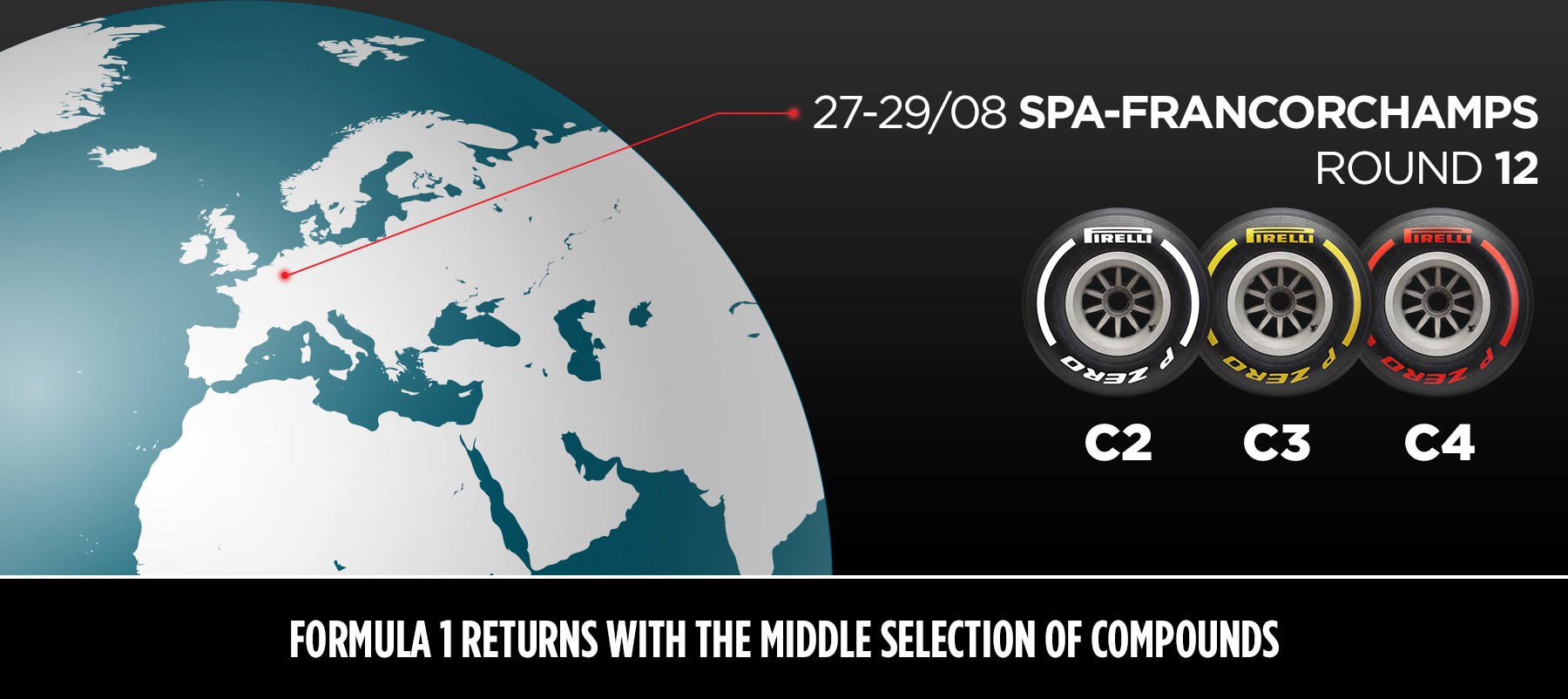2021 Belgian Grand Prix - Preview
WHY WE’VE CHOSEN THE TYRES
- Formula 1 is back after its summer break with compounds in the middle of the range for the Belgian Grand Prix at Spa-Francorchamps: the first race of the second triple-header of the 2021 season. In Belgium, the C2 will be the P Zero White hard, the C3 will be the P Zero Yellow medium, and the C4 will be the P Zero Red soft.
- This is the same nomination as last year, which was a step softer than the tyres nominated back in 2019.
- Spa, well-known as one of the most exciting tracks on the calendar, contains a wide range of different demands over the longest lap of the season.
TRACK CHARACTERISTICS
- Spa – located in the foothills of the Ardennes – is of course synonymous with changeable weather, which can also vary on different parts of the circuit. Although last year’s race was dry, there’s always a high chance of the Cinturato wet-weather tyres making an appearance at some point over the weekend.
- The forces put through the tyres at the Belgian Grand Prix are high, especially at the famous Eau Rouge-Raidillon complex, where the tyres are subjected to a fierce compression and heavy g forces over one of the fastest parts of the track.
- The Kemmel Straight at nearly 800 metres long, has the effect of cooling the tyres down, which affects grip through the following corners. In fact, from the exit of La Source all the way to Les Combes (which follows the Kemmel Straight) is a distance of just over two kilometres without any braking.
- Last year’s Belgian Grand Prix was won with a one-stop medium-hard strategy: the same tactic selected by all three podium finishers. They switched during a lengthy safety car period from lap 11 that heavily influenced the strategy, with all but two drivers stopping under the safety car.
FORMULA 3: WHAT TO EXPECT
The fifth round of the Formula 3 championship takes place at Spa using the P Zero Yellow medium tyre, with just one compound mandated by the regulations at every race. This compound offers the best compromise between performance and durability, faced with the challenging flat-out demands of Spa.
The medium is also the carry-over tyre (for use during free practice) from the previous race in Hungary. This year, with three races per weekend, the Formula 3 drivers get five sets of slick tyres as well as two sets of wet tyres per race weekend. Those wets could be particularly useful at Spa.
MARIO ISOLA – HEAD OF F1 AND CAR RACING
“The Belgian Grand Prix marks our third visit to Spa within a month in very different contexts, following the Spa 24 Hours, the Ypres Rally Belgium – which had its final day at Spa – and now Formula 1. The challenges of this track, especially when it comes to the weather, are well-known, as are the loads placed on the tyres. Last year the top three qualified on the medium tyre, while the soft offered a good step up in grip but required more management, and so was not considered to be an optimal race tyre. The majority of drivers went from medium to hard, with the pit stop dictated by the safety car at lap 11 for most of them. So we could see an interesting mix of strategies this year.”
| MIN. STARTING PRESSURES (slicks) | EOS CAMBER LIMIT | ||
|---|---|---|---|
 |
24.0 psi (front) | 22.0 psi (rear) | -2.75° (front) | -1.50 ° (rear) |  |
OTHER PIRELLI NEWS
- Pirelli was last at Spa just two weeks ago, with the race track forming the finale to the Ypres Rally Belgium, won by Hyundai’s local hero Thierry Neuville.
- The Spa 24 Hours at the beginning of the month was won by the Ferrari crew of Come Ledogar, Nicklas Nielsen, and Alessandro Pier Guidi, taking the Italian manufacturer’s first win at the race since 2004.
- Ferrari, McLaren and Mercedes participated in the most recent 2022 18-inch F1 tyre test following the Hungarian Grand Prix: just one prototype test session remains this year at Paul Ricard, in mid-September.

















